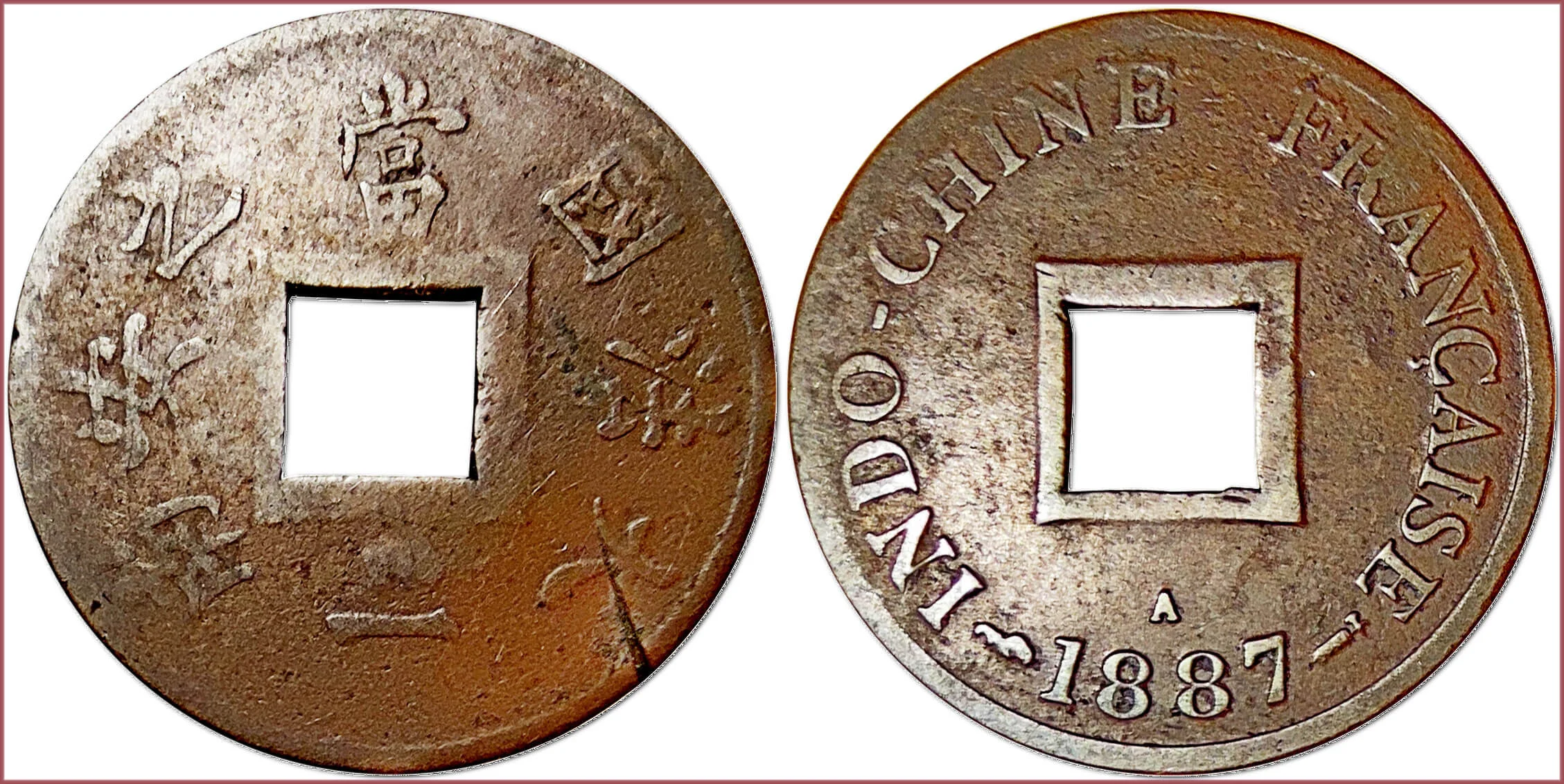SAPEQUE: COIN OF FRENCH INDOCHINA
2 sapeque, 1887: French Indochina
A coin with a square hole in the middle and legends written in Chinese and French.
當 二: equals 2 (inscriptions above and below the square hole).
Regarding the interpretation of this inscription, there is conflicting information. Some sources say that we are talking about the denomination of the coin in the meaning "2 sapèque". However, the authoritative online catalog Numista says that it is about the phrase "worth 2/1000 piastre"; in this case, this coin represents 1 sapeque (because sapeque = 1/500 piastre). Personally, I prefer the first version.
大法國 之安南: French protectorate of Annam (the text on the coin is written in Chinese characters and oriented from right to left).
Annam — French protectorate and colony encompassing the territory of the Empire of Đại Nam in Central Vietnam. Before the protectorate's establishment, the name Annam was used in the West to refer to Vietnam as a whole. The protectorate of Annam became a part of French Indochina in 1887, along with two other Vietnamese regions, Cochinchina in the South and Tonkin in the North.
INDO-CHINE FRANÇAISE: French Indochina.
Coin design: Jean-Auguste Barre (French sculptor and medalist).
Paris Mint (Monnaie de Paris, France) — "A" above the date + mint mark "cornucopia" and privy mark "fasces".
Mintage: 5.000.000.
- Bronze: 20 mm - 1.96 g
- Reference price: 7$
COIN SAPEQUE — WHERE & WHEN (coins catalog: by names & emitents)
- FRENCH INDOCHINA (1887-1902): sapèque = 1/5 centime = 1/500 piastre (by the way, there is a strange situation with the description of the 1/100 piastre of French Indochina in various numismatic sources: on the coins, the denomination is indicated in the "cent." format — in some catalogs these coins are called cents, in others — centimes)
- FRENCH COCHINCHINA (1875-1889): sapèque = 1/5 centime = 1/500 piastre
SAPEQUE as coin name known in numismatics as a small bronze coin of the French colony of Cochinchina (1875-1889) and of the colonial possession of French Indochina (1887-1902).
The French word "sapèque" comes from the Malay "sa paku", composed of sa ("one") and paku ("a series of one hundred pitis, strung on a thread" — small tin coins with a hole in the center).











